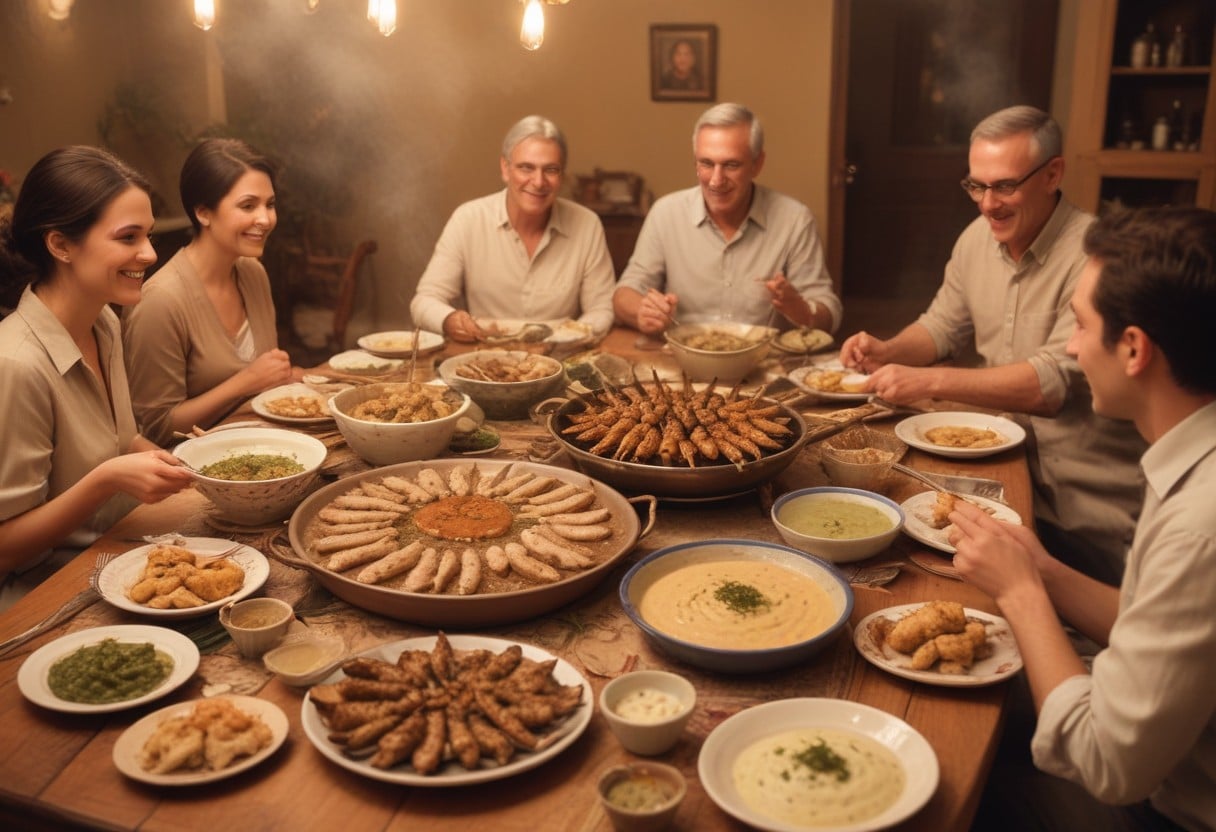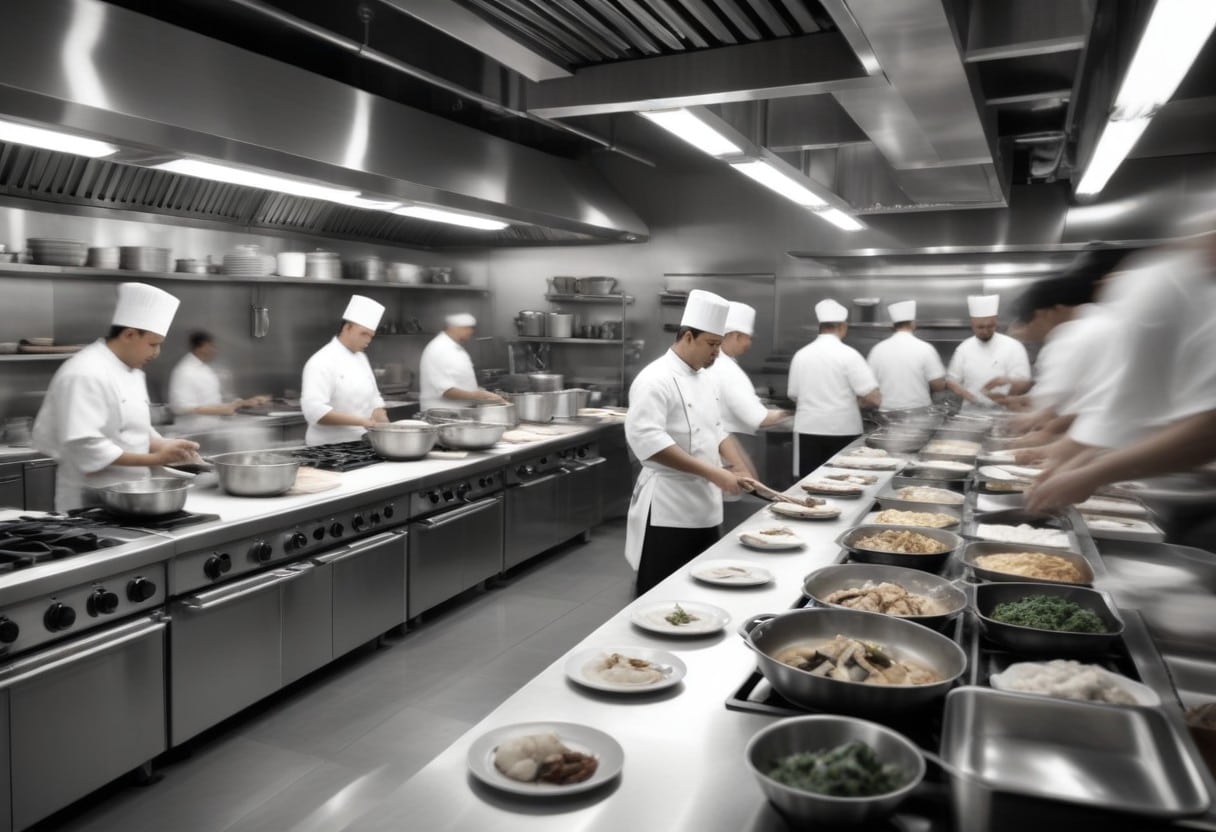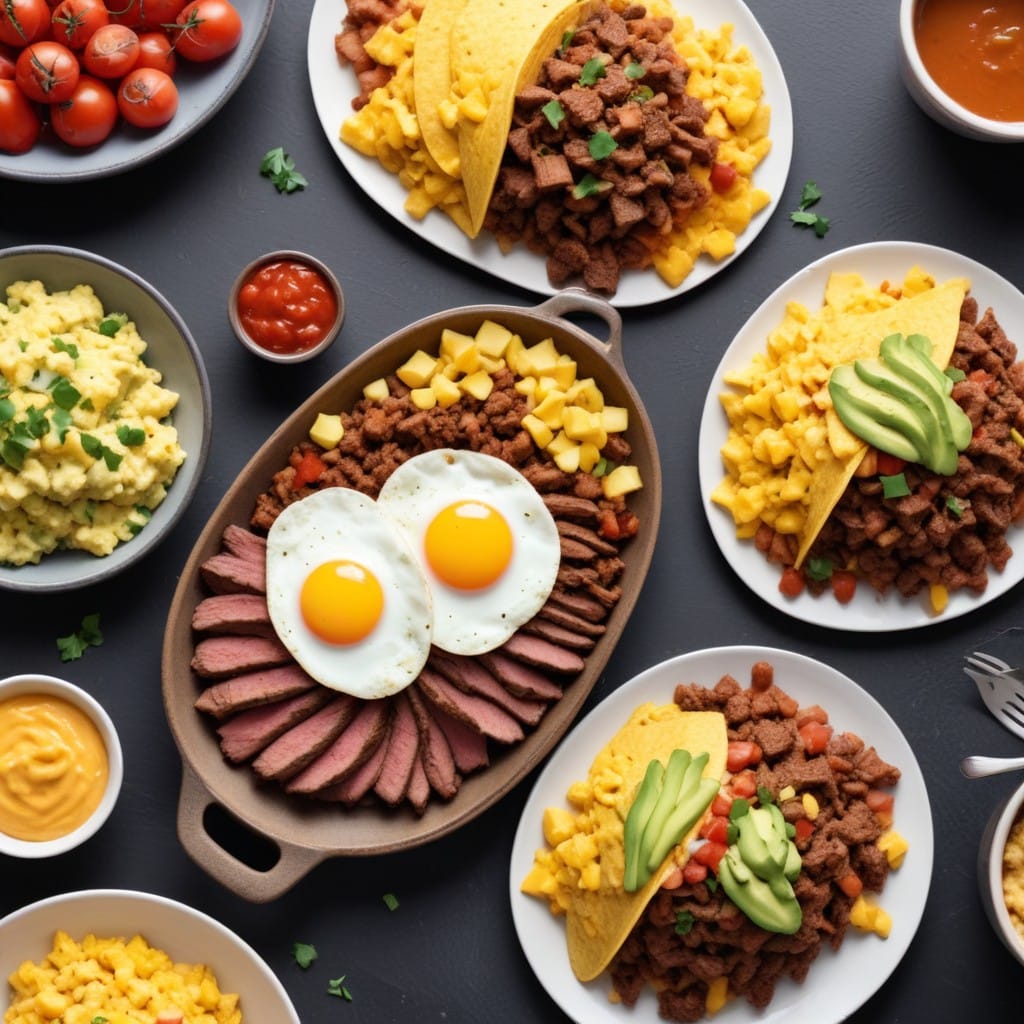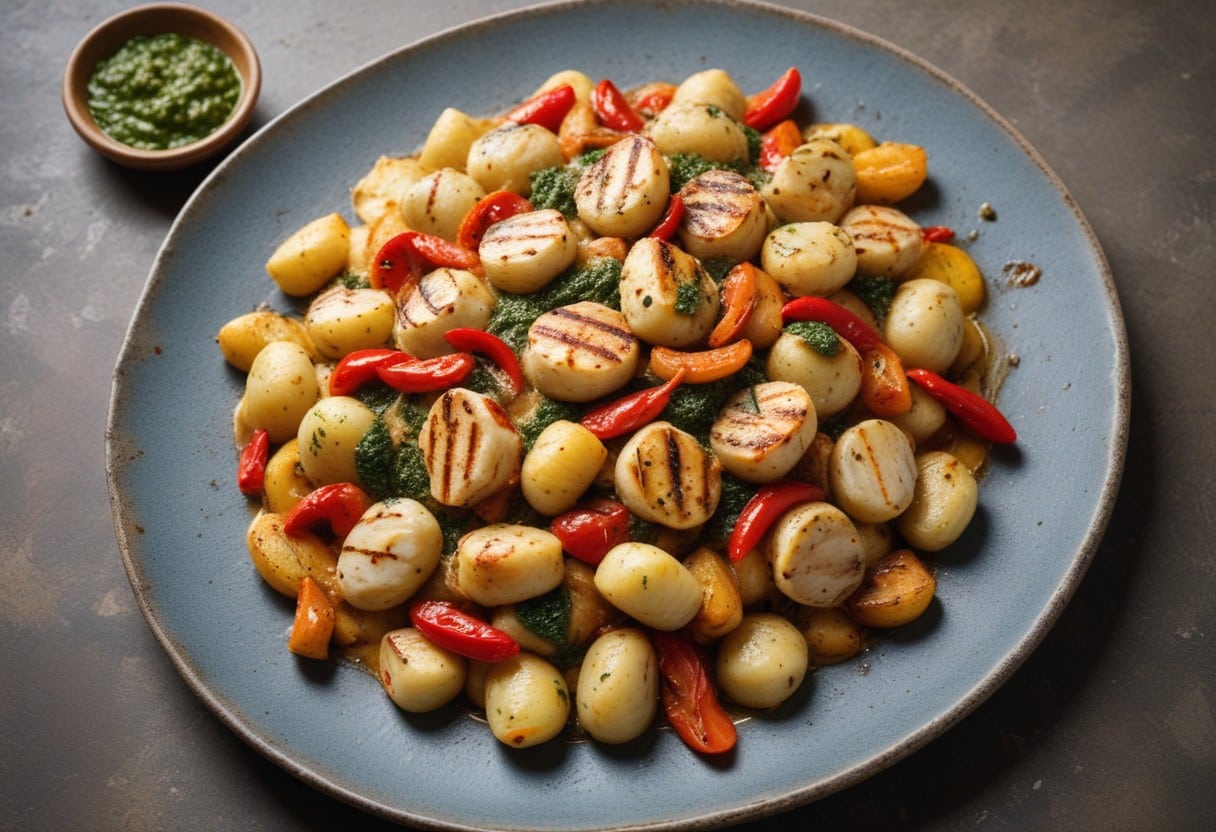The culinary world constantly evolves, captivating food enthusiasts with new trends. One such concept that has recently gained attention is “çeciir.” This unique term encapsulates the essence of fusion and creativity in cooking, emphasizing the blend of diverse culinary traditions to create innovative and flavorful dishes. This article delves into the concept of “çeciir,” exploring its origins, significance, and how it can be applied in the kitchen to elevate your cooking experience.

What is Çeciir?
“Çeciir” is a culinary philosophy that celebrates the fusion of different cuisines, techniques, and ingredients to create unique and memorable dishes. This approach is not just about combining flavors but also about respecting and understanding the cultural significance of each element used in the recipes. It motivates culinary professionals and home cooks to explore, create, and redefine the limits of conventional cooking techniques, fostering innovation and creativity in the kitchen.
Historical Roots and Linguistic Origins
Thought to stem from a blend of cultural and linguistic influences, the exact origin of the term “çeciir” remains uncertain, reflecting a rich historical tapestry. The concept itself, however, is rooted in the age-old practice of culinary fusion, where chefs from different backgrounds have historically blended their cooking styles and ingredients to create new and exciting dishes.
Historical Context
The idea of blending culinary traditions is not new. The exchange of spices, ingredients, and cooking techniques between East and West was facilitated by ancient trade routes such as the Silk Road. This exchange led to the creation of hybrid dishes that incorporated elements from multiple cultures. For example, the introduction of Indian spices into Middle Eastern cuisine during the medieval period gave rise to many beloved dishes that we still enjoy today.
Significant Historical Impacts
- Connecting Asia to Europe: Connecting Asia with Europe, the Silk Road formed a network of trade routes facilitating extensive exchange. Spices from India, tea from China, and dried fruits from Persia all contributed to a rich tapestry of flavors that blended into various regional cuisines.
- Blending Traditions: Leading to the fusion of European cooking techniques with local ingredients and traditions, European powers established trade relationships and colonies in Asia, Africa, and the Americas during the colonial era. For example, the use of curry in British cuisine is a direct result of British colonization in India.
- Immigration Waves: In more recent history, waves of immigration have brought diverse culinary traditions to new regions. Italian immigrants to America, for instance, introduced pasta and pizza, which have since evolved into uniquely American versions of these classic dishes.
The Philosophy of Çeciir
At its core, “çeciir” is about integration and synergy. This philosophy fosters creativity and innovation by blending elements from diverse culinary traditions to create superior dishes.
Key Principles
- Creativity: Encourages experimentation and the blending of diverse ingredients and techniques.
- Respect: Understanding and honoring the cultural significance of each culinary element.
- Balance: Achieving harmony in flavor, texture, and presentation.
- Innovation: Expanding traditional cooking to craft unique dining experiences.
Modern Applications of Çeciir
1. Çeciir in Contemporary Restaurants
Seamlessly blending ingredients and techniques from various cultures, popular dishes such as sushi burritos, Korean tacos, and Indian pizza showcase the trend of fusion cuisine embraced by many modern restaurants, which often incorporate the concept of ‘çeciir.
Prominent Illustrations
- Sushi Burritos: Combining the principles of Japanese sushi and the convenience of a burrito, sushi burritos feature sushi rice, raw fish, and various fillings wrapped in seaweed and eaten like a burrito.
- Korean Tacos: This dish merges Mexican and Korean flavors, typically featuring Korean BBQ meats like bulgogi or spicy pork, topped with kimchi and wrapped in a tortilla.
- Indian Pizza: Utilizing traditional pizza dough, this dish incorporates Indian ingredients such as paneer, tandoori chicken, and various chutneys as toppings, creating a unique fusion of flavors.
2. Home Cooking
Home cooks are increasingly experimenting with “çeciir” by incorporating ingredients and techniques from different cuisines into their everyday meals. This can be as simple as adding a dash of soy sauce to a traditional Italian pasta dish or using Middle Eastern spices in a classic American roast.
Tips for Home Cooks
- Start Simple: Begin by adding one or two new ingredients to a familiar dish. For example, try adding a teaspoon of curry powder to your chicken soup for a warming twist.
- Mix Techniques: Experiment with combining cooking techniques from different cuisines, such as grilling tofu (Asian technique) and serving it with a chimichurri sauce (South American sauce).
- Respect Ingredients: Understand the flavor profiles and cooking requirements of the ingredients you are using. This will help you combine them in ways that complement rather than clash.
3. Culinary Education
Culinary schools are recognizing the importance of teaching fusion cuisine and the principles of “çeciir.” Students are encouraged to experiment with diverse ingredients and techniques, preparing them to innovate and adapt in a globalized culinary landscape.
Educational Focus
- Cross-Cultural Techniques: Culinary programs are incorporating lessons on cross-cultural cooking techniques, teaching students how to blend methods like stir-frying, grilling, and braising.
- Ingredient Familiarity: Students are exposed to a wide range of global ingredients, learning how to source, prepare, and integrate them into fusion dishes.
- Creative Problem Solving: Encouraging students to solve culinary challenges creatively by blending different culinary traditions and creating new dishes.
Traditional Roots of Çeciir
Historical Examples
- Spaghetti Bolognese: While now considered a quintessential Italian dish, spaghetti itself originated from Chinese noodles brought to Italy by Marco Polo. The combination of Chinese noodles with Italian ingredients led to the creation of pasta as we know it today.
- Chicken Tikka Masala: Believed to have been created in Britain by Bangladeshi chefs, this dish blends Indian spices with a creamy, tomato-based sauce, representing a perfect example of culinary fusion.
Traditional Practices
In many cultures, fusion cooking has long been a way of life. For example, in the Caribbean, the blending of African, European, and indigenous cooking techniques and ingredients has given rise to a vibrant and diverse culinary tradition.
Key Traditional Fusion Dishes
- Jambalaya: This Creole and Cajun dish from Louisiana is a classic example of fusion cooking, combining French, Spanish, and West African influences. Seasoned with a blend of spices, it features rice, sausage, chicken, and seafood.
- Ratatouille: A French Provençal stewed vegetable dish that incorporates influences from Mediterranean cuisine, showcasing a blend of vegetables like tomatoes, zucchini, and eggplant.
- Pho: A Vietnamese noodle soup that combines Chinese and French culinary traditions, featuring rice noodles in a rich broth with various herbs and meats.
Fava Beans and Chickpeas in Çeciir Cuisine
Fava Beans
Packed with nutrients, including protein, fiber, vitamins, and minerals, fava beans are an excellent source of folate, manganese, copper, phosphorus, and iron. Additionally, they contain compounds that may offer anti-inflammatory benefits. Also known as broad beans, these versatile legumes are popular in Mediterranean, Middle Eastern, and North African cuisines. With a slightly sweet and nutty flavor, they are used in a variety of dishes such as soups, stews, salads, and dips.
Chickpeas
Rich in folate, iron, phosphorus, and magnesium, chickpeas contribute significantly to overall health and well-being. These legumes, also known as garbanzo beans, are an excellent source of protein, fiber, vitamins, and minerals, making them valuable in both vegetarian and non-vegetarian dishes. Their incredible versatility makes them a staple in many culinary traditions, including Middle Eastern, Indian, Mediterranean, and North African cuisines, featuring in a variety of dishes from soups and stews to salads and spreads.
Incorporation into Çeciir Cuisine
Both chickpeas and fava beans are excellent candidates for “çeciir” due to their versatility and nutritional benefits. Fava beans and Chickpeas can be used in a variety of fusion recipes to add texture, flavor, and nutritional value, such as:
- Chickpea Tacos: Combining Mexican and Middle Eastern flavors, these tacos feature spiced chickpeas, avocado, and tahini sauce wrapped in soft corn tortillas.
- Fava Bean Hummus: A twist on the traditional hummus, this version uses fava beans instead of chickpeas, blending Middle Eastern and Mediterranean flavors.
The Gluten-Free Component of Çeciir
Comprehending the Gluten-Free Diet: Basics, Benefits, and Considerations
Essential for individuals with celiac disease, gluten sensitivity, or wheat allergies, a gluten-free diet eliminates gluten, a protein found in wheat, barley, rye, and their derivatives. The rise of gluten-free diets has also led to a demand for gluten-free fusion cuisine, which aligns well with the principles of “çeciir.”
Exploring Gluten-Free Fusion Dishes: Recipes, Techniques, and Innovations
Here are some examples of fusion dishes that can be easily adapted to be gluten-free by using alternative ingredients:
- Gluten-Free Sushi Burritos: Use rice paper instead of traditional seaweed sheets and fill with gluten-free ingredients like fresh vegetables, seafood, and gluten-free soy sauce.
- Gluten-Free Korean Tacos with Corn Tortillas: Korean Tacos can be adapted to be gluten-free by using corn tortillas instead of flour tortillas and ensuring that all sauces and marinades are gluten-free.
- Indian Pizza with Gluten-Free Crust: Use a gluten-free pizza crust and top with Indian-inspired ingredients such as tandoori chicken, paneer, and chutneys.
Gluten-Free Ingredients in Çeciir
- Alternative Flours: Use flours made from rice, chickpeas, quinoa, or almonds to replace wheat flour in recipes.
- Naturally Gluten-Free Grains: Incorporate grains like quinoa, millet, buckwheat, and amaranth in fusion dishes.
- Gluten-Free Soy Sauce: Use tamari or other gluten-free soy sauce alternatives in Asian-inspired fusion dishes.
The Future of Çeciir
Emerging Trends
- Sustainable Fusion: With a growing focus on sustainability, future “çeciir” trends may emphasize the use of locally sourced ingredients in fusion cuisine, creating innovative dishes that are both environmentally friendly and delicious.
- Tech-Driven Innovation: Advances in food technology, such as molecular gastronomy, are likely to play a significant role in the future of “çeciir,” allowing chefs to create entirely new textures and flavors by combining traditional ingredients in novel ways.
- Health-Conscious Fusion: As consumers become more health-conscious, there is a growing demand for fusion dishes that are not only tasty but also nutritious. This trend may see the incorporation of superfoods and other health-promoting ingredients into fusion cuisine.
Global Influence
As the world becomes more interconnected, “çeciir” is poised to have an even greater influence on global cuisine. The exchange of culinary traditions will continue to inspire chefs and home cooks to create dishes that celebrate diversity and innovation.
Future Prospects
- Culinary Tourism: As more people travel and experience different cuisines, the demand for fusion restaurants and “çeciir” inspired dishes will likely increase. Culinary tourism will play a significant role in spreading and evolving the concept.
- Fusion of Plant-Based Cuisine: Expect to see innovative plant-based ‘çeciir’ dishes that offer unique flavors and textures, with the rise of plant-based diets leading to the fusion of vegetarian and vegan ingredients from different cuisines.
- Collaborative Cooking: Chefs from different cultural backgrounds may collaborate more frequently, combining their unique skills and traditions to create new fusion dishes that reflect a blend of their culinary heritages.

Çeciir Recipe Ideas
Here are a few more recipes that exemplify the principles of “çeciir” and highlight the use of chickpeas, fava beans, and gluten-free ingredients:
Recipe 1: Spicy Miso Tacos
Ingredients:
- 8 small corn tortillas
- 1 lb ground beef or tofu
- 2 tbsp miso paste
- 1 tbsp soy sauce
- 1 tbsp gochujang (Korean chili paste)
- 1 tsp sesame oil
- 1 avocado, sliced
- 1 cup shredded cabbage
Instructions:
Heat sesame oil in a large skillet over medium heat. Add the ground beef or tofu and cook until browned. Stir in the miso paste, soy sauce, and gochujang, and continue cooking for an additional 5 minutes. Warm the corn tortillas in a separate skillet. Fill each tortilla with the beef or tofu mixture, then top with shredded cabbage, avocado slices, and chopped cilantro. Serve with lime wedges on the side.
Recipe 2: Mediterranean Sushi Rolls
Ingredients:
- 2 cups sushi rice, cooked
- 4 nori sheets
- 1 avocado, sliced
- 4 oz feta cheese, crumbled
- 2 tbsp hummus
- Soy sauce for dipping
Instructions:
Place a nori sheet on a bamboo sushi mat and spread a thin layer of cooked sushi rice over it. Spread a thin layer of hummus over the rice, then arrange cucumber, red bell pepper, avocado slices, and crumbled feta cheese in a line across the bottom third of the nori sheet. Roll the sushi tightly using the bamboo mat, then repeat with the remaining nori sheets and fillings. Slice the rolls into bite-sized pieces and serve with soy sauce for dipping.
Recipe 3: Curried Spaghetti with Coconut Cream
Ingredients:
- 12 oz spaghetti
- 2 tbsp olive oil
- 1 onion, finely chopped
- Fresh cilantro for garnish
Instructions:
Cook the spaghetti according to the package instructions, then drain and set aside. In a large skillet, heat the olive oil over medium heat. Add the chopped onion and cook until translucent. Stir in the minced garlic and curry powder, and cook for another minute. Pour in the coconut milk and bring to a simmer. Add the cherry tomatoes and spinach leaves, cooking until the spinach is wilted. Season with salt and pepper to taste. Toss the cooked spaghetti in the sauce until well coated, then garnish with fresh cilantro before serving.
Recipe 4: Middle Eastern Inspired Ramen
Ingredients:
- 1 tbsp harissa paste
- 2 cups cooked ramen noodles
- 1 cup chickpeas, drained and rinsed
- 1 cup baby spinach
- 2 soft-boiled eggs
- 1 tbsp chopped fresh mint
- 1 tbsp chopped fresh parsley
- Lemon wedges
Instructions:
Bring the chicken or vegetable broth to a boil in a large pot. Stir in the miso paste and harissa paste, then reduce the heat to a simmer. Add the cooked ramen noodles and chickpeas, cooking for 3 minutes. Stir in the baby spinach and cook until wilted. Divide the ramen into bowls and top each with a soft-boiled egg. Garnish with chopped mint and parsley, and serve with lemon wedges on the side.
Recipe 5: Quinoa Salad with Thai-Mexican Fusion
Ingredients:
- 1 cup black beans, drained and rinsed
- 1 red bell pepper, diced
- 2 tbsp fish sauce
- 1 tbsp sriracha
- 2 tbsp olive oil
- Salt and pepper to taste
- 1 cup of cooked quinoa
Instructions:
Combine the cooked quinoa, black beans, red bell pepper, and mango in a large bowl. In a small bowl, whisk together the lime juice, fish sauce, sriracha, and olive oil. Pour the dressing over the quinoa mixture and toss to coat evenly. Stir in the chopped cilantro and mint. Season with salt and pepper to taste. Serve the salad chilled or at room temperature.
Recipe 6: Chickpea and Avocado Stuffed Sweet Potatoes
Ingredients:
- 4 sweet potatoes, baked
- 1 can chickpeas, drained and rinsed
- 1 lime, juiced
- 2 tbsp tahini
- Salt and pepper to taste
- Fresh cilantro for garnish
Instructions:
Bake the sweet potatoes until tender. In a bowl, combine the chickpeas, diced avocado, chopped red onion, lime juice, and tahini, and season with salt and pepper to taste. Slice the baked sweet potatoes open and stuff them with the chickpea mixture. Garnish with fresh cilantro and serve.
Recipe 7: Fava Bean and Quinoa Salad
Ingredients:
- Cooked quinoa: 1 cup
- Cooked and peeled fava beans: 1 cup
- Diced cucumber: 1 cucumber
- Diced red bell pepper: 1 red bell pepper
- Chopped fresh mint: 1/4 cup
- Chopped fresh parsley: 1/4 cup
- Olive oil: 3 tablespoons
- Lemon juice: 2 tablespoons
Instructions:
Combine the cooked quinoa, fava beans, diced cucumber, and red bell pepper in a large bowl. In a small bowl, whisk together the olive oil, lemon juice, salt, and pepper. Pour the dressing over the quinoa mixture and toss to coat evenly. Stir in the chopped mint and parsley. Serve the salad chilled or at room temperature.
Recipe 8: Gluten-Free Chickpea Flour Pancakes
Ingredients:
- 1 cup chickpea flour
- 1 tbsp olive oil
- 1/2 cup chopped spinach
- 1/4 cup diced tomatoes
- Fresh herbs for garnish
Instructions:
Whisk together the chickpea flour, baking powder, and salt in a bowl. Gradually add the water, whisking until smooth. Stir in the olive oil, chopped spinach, and diced tomatoes. Heat a non-stick skillet over medium heat and pour in the batter to form pancakes. Cook until bubbles form on the surface, then flip and cook until golden brown. Garnish with fresh herbs and serve.
How to Incorporate Çeciir into Your Cooking
1. Embrace Diverse Ingredients
One of the key aspects of “çeciir” is the use of diverse ingredients from various culinary traditions. This can involve sourcing unique spices, herbs, and produce that are not typically used together. For example, combining Asian spices with Mediterranean vegetables or using Latin American sauces with European meats can create unexpected and delightful flavors.
2. Experiment with Cooking Techniques
“Çeciir” encourages experimenting with different cooking techniques to bring out the best in your ingredients. This could mean using a Japanese grilling method for a traditional Italian dish or incorporating French pastry techniques into an American dessert.
3. Honor Cultural Heritage
While fusion cooking is about creativity and innovation, it’s essential to respect the cultural significance of the ingredients and techniques you use. Understanding the history and traditions behind each element can help you create dishes that honor their origins while presenting them in a new and exciting way.
4. Focus on Balance and Harmony
The success of a “çeciir” dish lies in achieving a balance and harmony of flavors. Ensure that no single element overpowers the others by paying attention to the interplay of sweet, salty, sour, and bitter tastes. This balance will create a more nuanced and enjoyable dining experience.
Comprehensive FAQ Section
1. What is “çeciir” in culinary terms?
“Çeciir” is a culinary philosophy that emphasizes the fusion of different cuisines, techniques, and ingredients to create unique and memorable dishes.
2. How can I start experimenting with “çeciir” at home?
Begin by adding one or two new ingredients to a familiar dish or combining cooking techniques from different cuisines. For example, try adding soy sauce to a pasta dish or using Middle Eastern spices in a traditional roast.
3. Are there any specific cuisines that work best together in “çeciir”?
Examples include Japanese and Mexican (sushi burritos), Korean and Mexican (Korean tacos), and Indian and Italian (Indian pizza).
4. What ingredients are frequently used in “çeciir” recipes?
Common ingredients used in “çeciir” recipes vary widely depending on the cuisines being fused. Examples include Asian spices, Mediterranean vegetables, Latin American sauces, and European cheeses.
5. How does “çeciir” differ from traditional fusion cuisine?
While both “çeciir” and traditional fusion cuisine involve combining elements from different culinary traditions, “çeciir” places a stronger emphasis on creativity, balance, and respect for cultural significance.
6. Can I practice “çeciir” cooking at home, or is it only for professional chefs?
You can definitely practice “çeciir” cooking at home.
7. What are some tips for achieving balance in “çeciir” dishes?
Strive for a harmonious blend of textures and tastes by ensuring that no single element overpowers the others and paying attention to the interplay of sweet, salty, sour, and bitter flavors in “çeciir” dishes.
8. Is “çeciir” suitable for all dietary preferences?
Yes, “çeciir” can be adapted to suit various dietary preferences and restrictions. Whether you are vegetarian, vegan, gluten-free, or have other dietary needs, you can apply the principles of “çeciir” to create fusion dishes that meet your requirements.
9. What health benefits are associated with “çeciir”?
By combining ingredients from different culinary traditions, “çeciir” can offer a wider variety of nutrients and health benefits. For example, using turmeric in a dish can add anti-inflammatory properties, while incorporating quinoa can boost protein and fiber intake.
10. How can “çeciir” contribute to sustainable cooking?
“Çeciir” can promote sustainability by encouraging the use of locally sourced and seasonal ingredients in fusion dishes.
11. How do chickpeas and fava beans fit into “çeciir” cooking?
Chickpeas and fava beans are versatile ingredients used in many culinary traditions. In “çeciir” cooking, chickpeas and fava beans can be incorporated into fusion dishes to add texture, flavor, and nutritional value, serving as excellent sources of protein, fiber, and essential nutrients.
12. Can “çeciir” recipes be gluten-free?
Absolutely! Many “çeciir” recipes can be adapted to be gluten-free by using alternative flours, grains, and gluten-free sauces.
13. What are some gluten-free ingredients commonly used in “çeciir”?
Common gluten-free ingredients used in “çeciir” include rice, quinoa, millet, buckwheat, chickpea flour, almond flour, and gluten-free soy sauce alternatives like tamari.
14. What does the future hold for “çeciir”?
The future of “çeciir” looks promising, with trends such as health-conscious ingredients, sustainability, technological advancements, and cultural exchange shaping its evolution. This culinary philosophy is poised to revolutionize the culinary landscape by fostering creativity, innovation, and a deeper appreciation for global cuisine.
Conclusion
“Çeciir” represents a unique and exciting approach to cooking that celebrates the fusion of diverse culinary traditions. By embracing creativity, respect for cultural significance, and a focus on balance and harmony, you can create innovative and memorable dishes that delight the senses. Whether you are a professional chef or a home cook, incorporating the principles of “çeciir” into your culinary repertoire can lead to a richer and more enjoyable cooking experience.
With a focus on sustainability, health-conscious ingredients, and technological advancements, “çeciir” is poised to revolutionize the culinary landscape. For endurance athletes, runners, Hyrox competitors, CrossFit enthusiasts, and triathletes, embracing these tailored solutions is not just a trend but a necessary step toward achieving their full potential.
For more information and recipe inspiration, explore various culinary resources and experiment with your own “çeciir” creations. The future of culinary fusion is bright, and with “çeciir,” you can be at the forefront of this exciting movement, crafting dishes that are both innovative and deeply rooted in the rich tapestry of global cuisine.




